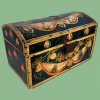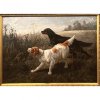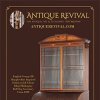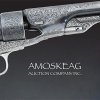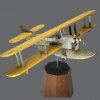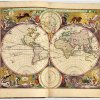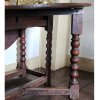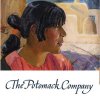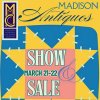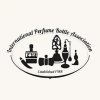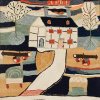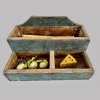November American History Auction
November 20th, 2015
Cowan’s Auctions, Cincinnati, Ohio
Photos courtesy Cowan’s Auctions
An original copy of Gardner’s Photographic Sketch Book of the War took the top price during the American history sale held by Cowan’s Auctions on November 20, 2015, in Cincinnati, Ohio. The two-volume set realized $84,000 (including buyer’s premium) against an estimate of $100,000/150,000. The likely reason for the shortfall indicated several things about the trade.

Gardner’s Photographic Sketch Book of the War (Philp & Solomons, 1865-66), two volumes, first edition, containing 100 albumen photographs by Alexander Gardner and others, pebbled dark brown/black morocco cover with gilt decorative borders, scuffed covers, some loose pages, varying wear and toning to the photographs, plus other damage, sold for $84,000.
Described as the first modern photo essay, the work features 100 albumen photographs of the Civil War by Alexander Gardner and others, each measuring 6¾" x 8¾" and mounted on larger sheets with printed captions, each plate opposite a page detailing the scene.
Views such as Timothy H. O’Sullivan’s A Harvest of Death, a July 1863 photo depicting fallen soldiers scattered across the Gettysburg battlefield, brought a realistic picture to the minds of those who might have previously seen the war in romantic terms. In part, the text accompanying A Harvest of Death noted:
“A battle has been often the subject of elaborate description; but it can be described in one simple word, devilish! and the distorted dead recall the ancient legends of men torn in pieces by the savage wantonness of fiends. Swept down without preparation, the shattered bodies fall in all conceivable positions. The rebels represented in the photograph are without shoes. These were always removed from the feet of the dead on account of the pressing need of the survivors. The pockets turned inside out also show that appropriation did not cease with the coverings of the feet. Around is scattered the litter of the battle-field, accoutrements, ammunition, rags, cups and canteens, crackers, haversacks, &c., and letters that may tell the name of the owner, although the majority will surely be buried unknown by strangers, and in a strange land. Killed in the frantic efforts to break the steady lines of an army or patriots, whose heroism only excelled theirs in motive, they paid with life the price of their treason, and when the wicked strife was finished, found nameless graves, far from home and kindred.”
Such photographs tugged at the conscience of the American people. Those stark black-and-white images were to the Civil War what Robert Capa’s grainy pictures of the Normandy invasion were to World War II.
Contemporary reprints of Gardner’s Photographic Sketch Book of the War are readily available, but first editions are scarce. It is estimated that no more than 200 copies were originally produced, so when one comes on the market, condition looms large.
In November 2014 Cowan’s sold a near-pristine set for $144,000. “Condition was a difference,” said Katie Horstman, Cowan’s director of American history, in comparing the two examples offered one year and $60,000 apart.
The set at Cowan’s in 2015 had scuffed covers, some loose pages, toning to the photographs, and other damage. Even so, the wear and tear might not have been the only determinant. Supply and demand almost certainly came into play, but in an intriguing way.
Although original copies of the work are highly limited, so are the number of buyers willing and able to pony up $100,000, more or less, to snag a set. Once a collector or institution obtains a copy, that bidder generally doesn’t come back for more. If the buyer in 2014 dropped out of the market, an already limited pool of participants was reduced, possibly affecting the bidding in 2015.
Other Civil War material did well. An extensive Civil War archive of Union General Nathaniel McLean, comprising nearly 400 items, sold within estimate for $33,600. Quantity and content were the keys to the lot, which included 339 war-dated letters and covers sent by McLean to his wife between June 1861 and February 1865.

The extensive Civil War archive of Union General Nathaniel McLean, comprising nearly 400 items, sold for $33,600.
McLean wrote at least once a week when he was busiest with the war, but often daily when time allowed. As the auction listing noted, “McLean’s uncatalogued correspondence offers historians a fresh look at such controversial engagements as Second Bull Run and Chancellorsville, where fate placed his regiment at critical positions on those fields.” Also included was correspondence pertaining to Virginia battles at McDowell and Cross Keys, and northern Georgia operations during the Atlanta campaign, including Resaca, New Hope Church, and numerous daily engagements.
“It stands out because it’s so extensive and included close to four hundred pieces of paper, with maybe three hundred-plus being written by McLean from the field,” Horstman said. Most Civil War archives coming through Cowan’s have no more than 80 to 100 letters, she noted.

Three Civil War pocket diaries of William Tufts of Belfast, Maine, a member of the 4th Maine Infantry and the newly formed Union Army Balloon Corps, entries covering each day from 1862 through 1864, sold for $10,455.
 Also drawing considerable interest were three Civil War diaries of William Tufts of Belfast, Maine, who joined the 4th Maine Infantry before landing with the newly formed Union Army Balloon Corps. Written daily between 1862 and 1864, his entries ranged from a few lines to full pages. The diaries sold for $10,455. Under the direction of Thaddeus S.C. Lowe, the balloon corps provided airborne reconnaissance using seven gas-filled balloons to observe Confederate activity. Archival material on the balloon corps is limited. “You don’t see that every day,” said Horstman.
Also drawing considerable interest were three Civil War diaries of William Tufts of Belfast, Maine, who joined the 4th Maine Infantry before landing with the newly formed Union Army Balloon Corps. Written daily between 1862 and 1864, his entries ranged from a few lines to full pages. The diaries sold for $10,455. Under the direction of Thaddeus S.C. Lowe, the balloon corps provided airborne reconnaissance using seven gas-filled balloons to observe Confederate activity. Archival material on the balloon corps is limited. “You don’t see that every day,” said Horstman.
Material related to Abraham Lincoln included two large-format albumen photographs of Lincoln’s funeral procession in Chicago, both unsigned but likely taken by S.M. Fassett in early May 1865. One pictured a procession of 36 maidens in white surrounding the horse-drawn hearse carrying Lincoln’s body under a decorated three-arched facade draped with banners honoring the fallen president. On the street were men, including some soldiers. The 12¾" x 15" photograph on a slightly larger mount sold for $8100.

The large-format albumen photograph of Abraham Lincoln’s funeral procession passing through the funeral arch on 12th Street in Chicago, an uncredited image by S.M. Fassett, May 1 or 2, 1865, 12¾" x 15" plus mount, even toning to the image and a few faint spots on the image and mount, sold for $8100.
“That size is what really drove the price up on that,” said Horstman. “We hadn’t seen an example that large before. The one that followed didn’t bring as high a price, but I don’t think the image was as dramatic.” That second photo, depicting Lincoln’s funeral train on a trestle that carried the tracks over Lake Michigan, realized $2520.
Other presidents represented in the auction included George Washington, with items including an envelope signed by Washington and addressed to Benedict Arnold. This most notable item in a larger display, the envelope had significant condition problems. The grouping sold for $7200. A 29" high plaster statuette of George Washington by John Rogers, 1875, brought $6000.

This envelope signed by George Washington and addressed to Benedict Arnold, likely dating between June 1778 and April 1780, the 3½" x 6½" panel from a larger sheet, affixed to a board with an engraving of Washington based on a painting by George Stewart, two January 1800 newspaper articles from the London Morning Herald announcing the death and the funeral of Washington, a clipped medallion paper portrait of Washington, plus a label for a missing 1847 Washington postage stamp, 13" x 17½" overall, all with toning and tape residue darkening on some items, darker foxing along the central fold of the address panel, sold for $7200.

Washington, a 29" high plaster statuette of George Washington by John Rogers, New York, 1875, in excellent condition, sold for $6000.
Washington remains a strong seller. “He always does well,” said Horstman.
Also doing well was Western-related memorabilia. A lot consisting of five Wild West Show photographs by Prince Roland Bonaparte, possibly taken during a Paris tour in 1889, sold for $9000. The key image was a previously unknown portrait of Annie Oakley posed sidesaddle on her horse in an outdoor setting. Material pertaining to the entertainer, especially anything unusual, remains highly desirable.

The linen-backed chromolitho-graph poster promoting “Graham & Butler. America’s Own Rifle Team and Champion All Around Shots.,” printed by Strobridge Litho. Co., Cincinnati, and picturing John Graham and Frank Butler performing trick shots, 28" x 18½", in very good condition, minor toning, partially trimmed top, sold for $17,400.

A group of five Wild West Show photo-graphs by Prince Roland Bonaparte, including a previously unknown portrait of Annie Oakley posed sidesaddle on her horse in an outdoor setting, one of four photos possibly taken during the Paris tour of the Wild West Show in 1889, in good condition overall with some toning, sold for $9000.
Selling for $17,400 was a highly colorful 28" x 18½" chromolithograph poster promoting “Graham & Butler. America’s Own Rifle Team and Champion All Around Shots.” It depicts John Graham and Frank Butler performing trick shots, including rifle shots bent over backwards, between the legs, and at an apple perched on each other’s head. In very good condition overall, the poster was printed in 1882 by the Strobridge Litho. Co. of Cincinnati. It is only the second example known; the other is held by the Cincinnati Historical Society.
Cowan’s next live salesroom American history auction is slated for June 10. For more information, contact Cowan’s at (513) 871-1670 or visit the website (www.cowans.com).

The set of three “Bleeding Kansas” broadsides published during heightened tensions that existed between 1854 and 1861, when territory residents disagreed over the admission of more slave states into the Union, compounded by forceful responses by a governor determined to regain law and order, toning on all three sheets and some minor tears to the outer margins, soiling to two, and typical folds, sold for $15,000.

A group of 62 photographs, partially shown, of Buffalo Soldiers and their families, including a Medal of Honor recipient, 12 images being cabinet cards of the men in uniform, most photos with moderate soiling and edge/corner wear, some with heavy soiling and stains, brought $13,200.
Originally published in the March 2016 issue of Maine Antique Digest. © 2016 Maine Antique Digest

